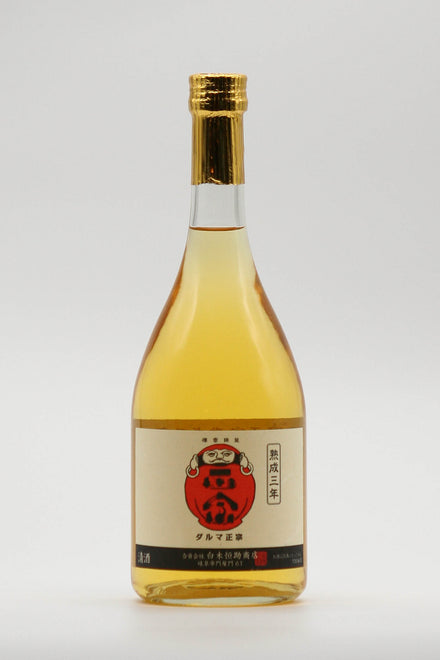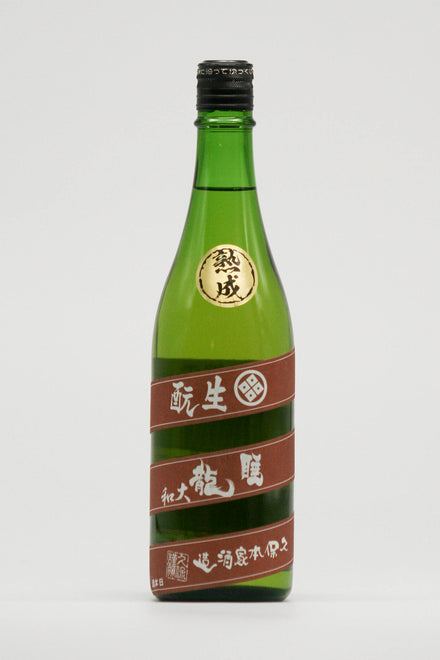
This sake is made by aging raw sake that has not been pasteurized, making it ideal for aging. This is a ``3 star (cup)'' sake that has been ranked among the top in the sake category suitable for warming by multiple ripe and warm tasters.
2BY Okuharima Yamahai Hyogo Yumenishiki 55 raw
| Vintage | 2020 |
| Years aged | 2 years |
- 2010 or later
- All Products
- Less than 5,000 yen
- Light Yellow/Green
- More attractive when warmed
- Throughout the meal
- Brewer:Shimomura Shuzoten
- Alcohol:17.3 degrees
- Volume:720ml
Couldn't load pickup availability
[ Drinking alcohol under the age of 20 is prohibited by law. ]
Shimomura Sake Brewery is located in the Banshu region of Hyogo Prefecture, which is known for producing high-quality sake rice Yamadanishiki.
This sake is made by aging raw unprocessed sake produced by Yamahai, and is particularly characterized by its overflowing charm.
Please enjoy the rich flavor, the tantalizing acidity and sharpness, and the unique aroma of raw aging with your meal.
- about
-
Type 純米吟醸 Rice polishing ratio 55% Yeast type Association No. 7 Ingredients/raw materials rice, rice malt Rice type Hyogo Yumenishiki Origin of rice Hyogo prefecture Toji(Brew Master) - Assemblage -
- Recommended occasions/temperature
-
- How to store
-
- Delivery dates and charges
-

Tasting comments
-
Nobuhiro Ueno
(Mature and Warm Bar Master / Toki SAKE Association Executive Director)(chilled)
The aroma of aged raw sake may be a matter of personal preference, but it's not something that bothers me, and I just love it as a personal hobby. Also the scent of koji.
The taste is a pleasant sourness and the sweetness of the rice, creating a balance of umami. The aftertaste leaves a pleasant sour taste that makes you want to eat more.
(warm)
If you include freshly cooked rice, the aroma will be even more pronounced. Although it can be said that this alcoholic beverage is characterized by its acidity, it is not sour or sour, but rather has a beautiful acidity with a umami flavor. Raising the temperature will make it even tighter, leading to sharpness. The aftertaste is long and the taste progresses. -
Hidekazu Ishiwata
(Former National Tax Bureau Chief Appraiser)(chilled)
The top has a nutty aroma. A strong fresh aroma.
The aroma is sweet and burnt, with a koji-like nuance.
The taste is sweet, spicy, and acidic. It's interesting to let it mature even more.
(warm)
A sweet, nutty finish with hints of grain.
It has an isoamyl-based aroma that makes you feel fruity, and has a solid volume.
The acidity and bitterness round out the flavor, giving it a rich flavor and a long aftertaste. -
Akiko Toda
(Director of ITTEKI, Japan Sake and Meat Research Institute)(chilled)
The scent of freshly cooked white rice and the scent of cedar wood. Later, a refreshing scent reminiscent of melon and pear emerges. The lingering sweetness is pleasant and the acidity is light. The aroma probably changes depending on the temperature, so you'll want to enjoy it by gradually changing the temperature from lukewarm to hot.
(warm)
The aroma of freshly cooked rice that emanates from the rice cooker, which is unique to raw sake, and when you put it in your mouth, you can feel the slight sweetness typical of rice.
Raising the temperature will make it crisper and easier to drink, but the aroma will weaken, so we recommend 50°C. I think it would be best paired with grilled mackerel.
-
Yuji Yamauchi
(Yushima Tenjinshita Sushi Hatsu 4th generation / 1st JSA SAKE DIPLOMA competition winner)(chilled)
Complex, unique nutty aroma
It's full-bodied, and the nuttiness is deep in the flavor.
The acid balance also matches the flavor.
I want to pair it with sashimi made with seared fish skin.
(warm)
The aroma of plump nuts and honey, the swelling of the rice, and the lingering thickness are wonderful. For sashimi made with fatty fatty tuna, soy sauce, and wasabi, or seared the back of yellowtail.
At 55℃, the acidity and flavor become crisp. As the temperature returns, the roundness and swelling of the rice is irresistible. It also goes well with shabu-shabu sesame sauce.
Brewer
- Choosing a selection results in a full page refresh.
- Opens in a new window.



